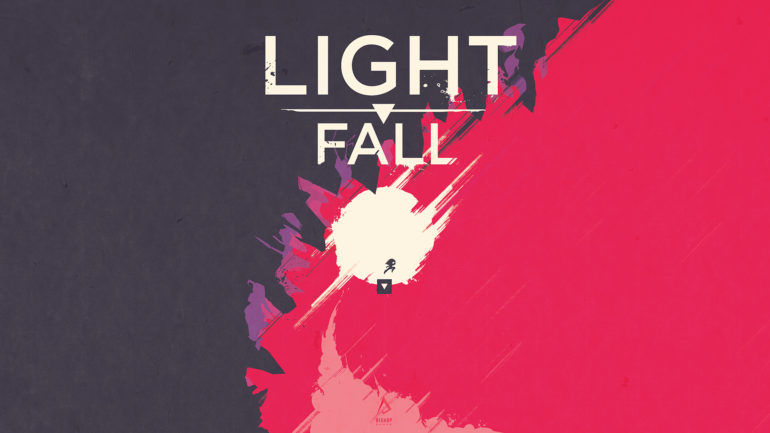While I think taking on the shadowy 2D platformer isn’t something new, Light Fall showed me there are still ways to really surprise in those mechanics.
Bishop Games’ new project had you playing a mysterious little boy who travels through a dark world with a style similar to what you’ve seen in games like Outlast, where solid colors and negative space are used effectively and minimally to create a really fresh look. In motion, Light Fall has echoes of Ori and the Blind Forest, with very lively animations that pop out and flourish themselves in just the right way.
The surprises and differences in Light Fall come primarily from its mechanics. Instead of leaning on standard double jumps, the game puts you in control of a cube that you have total autonomy over. Pressing the jump button in the air has this cube appear under you, creating a platform beneath you. You can repeat this up to four times in the air, either getting you more altitude, or as it’s often more used in the slice of the game I had access to, to get much further.

By sprinting forward and continually producing new platforms with well timed jumps, you can cover a massive amount of land in a very short time. By steadily wall-jumping off a vertical incline and creating platforms to go along with you, you can climb almost any steep incline and get a good amount off that wall to press off in any which direction. The platform is even used to create breaks in laser grids to fall past them, with careful timing to place the cube in front of the laser’s horizontal path.
All the uses of the platform are smart, and it’s inclusion alone is a really novel idea. It can only be summoned four times, like I said, but refreshes anytime you hit the ground, meaning careful timing with how many you use and how many you have left to solid ground is a big part of the challenges I saw later in the demo.
On top of that, the other abilities you have use this same cube, one allowing you to freely maneuver it around to protect yourself from hazards, like more laser grids, and a forward attack that can only be used on solid ground. Both these abilities pull the same cube you use for your platforming, so you have to think ahead with your jumps and abilities, and if there are any of the small enemies that sometimes dot your path, anticipate not being able to recover with any summoned platforms

All of this is really put to the test in the final slice of the game I played, where, under time pressure, you press through a gauntlet of spinning and maneuvering hazards in order to break three towers restraining a greater creature from the story. It’s exceptionally hard, and the mountainous jump in difficulty toward the end of the demo is a pretty steep incline in itself. The tools given to you I think are explained well, but the challenge presented to you is very much juxtaposed to the opening sections of the demo.
My biggest frustration with my time with Light Fall wasn’t the difficulty so much as it was the controls. They seemed finicky in a way that was more than inconsistent. Summoning platforms seemed to only work half the time, and character movement seemed stiff along with it. It felt like the controls themselves were pushing back against me in a really frustrating way, making executing the precision I needed to even harder than it felt it should be. It isn’t just inconsistency, but also some input latency and the sluggish feel of movement. It harkened to something as precise as Ori and the Blind Forest, but didn’t feel near as responsive.
Sometimes summoning a platform worked, and sometimes, in the same scenario, it just didn’t, or I’d be flung into a panic and need to mash the jump button multiple times before my saving platform would appear.
It’s worth noting the game is very much unfinished, but some of the tightness to the controls standout as the most concerning aspects of its platforming.
Light Fall is set to release later this month, and has a lot of cool ideas that are worth looking out for.
Preview build provided by the publisher for Steam.






